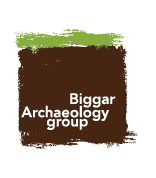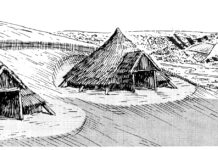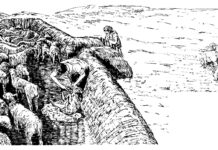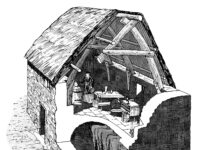Bastle houses were defensive farmhouses of the late 16th and early 17th centuries and were built exclusively in the border areas between Scotland and England. Tenant farmers who were wealthy as a result of their flocks of sheep and herds of cattle became the target of the infamous border reivers who pillaged the lands between the two countries; often by stealth of night, the reivers arrived to drive off as many animals as they could. In order to protect their families and their most valuable possessions, the upland farmers built bastle houses (derived from the French ‘bastille’ which means a strong or defensive place), strong stone buildings, often with a barrel vaulted basement to keep some cattle in, and a single storey above where the people lived. The doors were reinforced by stout draw bars; there were only a few tiny windows and sometimes the roof was slated to prevent fire damage.
Such buildings have long been known to exist along the Borders, especially in Northumberland, but new research has shown that bastle houses were built further north. Sites have now been found in the upland glens between Clydesdale and Dunbar in the east and to the south near Moffat and in New Abbey, near Dumfries, and one example is known at Penicuik just south of Edinburgh. Evidence of other farm buildings, around the once substantial stone bastles can often be seen as grassy bumps and shapes on the ground.
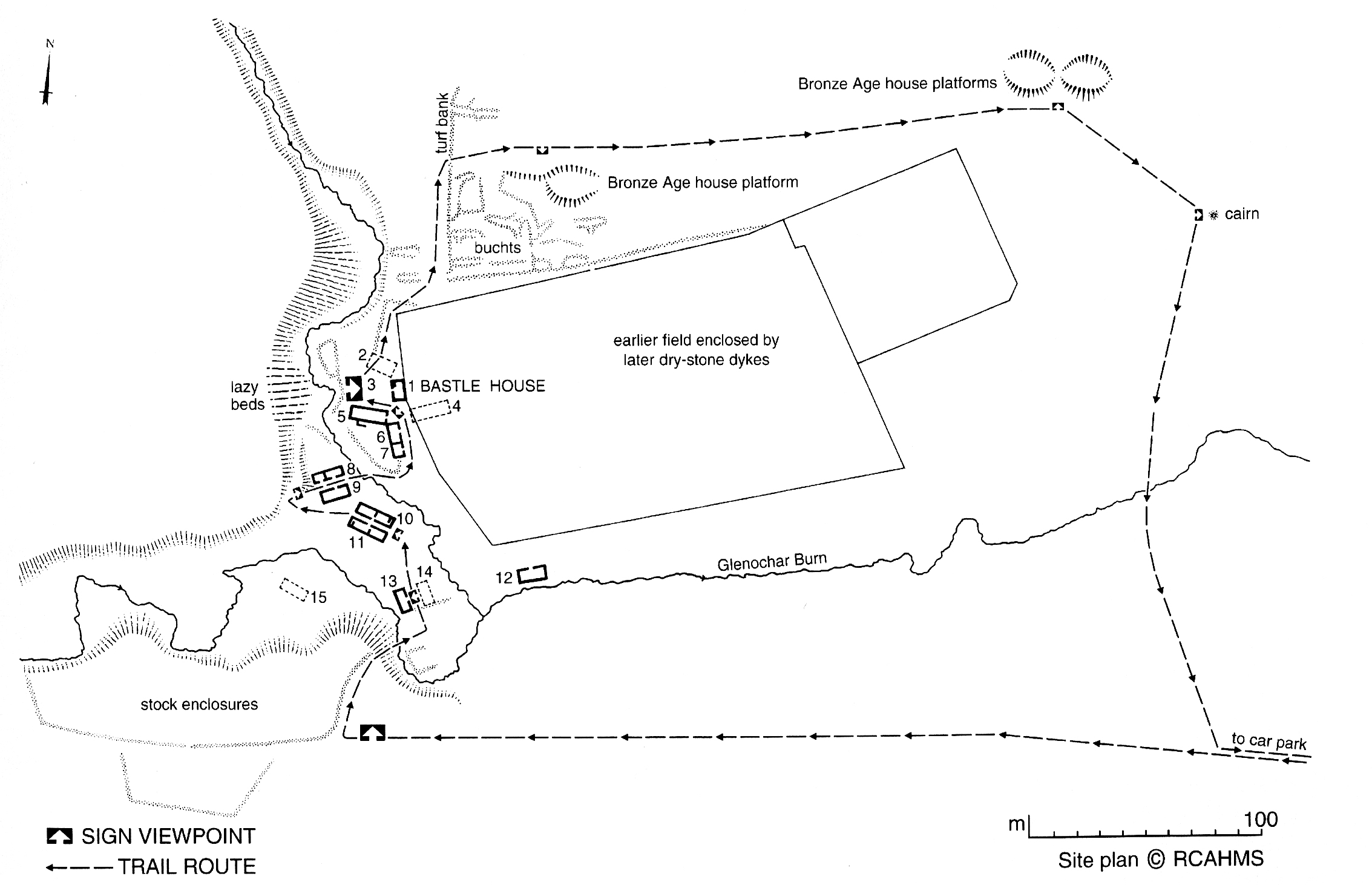
The Glenochar fermtoun, excavated by archaeologists from Lanark & District Archaeological Society and Biggar Archaeology Group, is an excellent example of a fermtoun with a bastle house. The excavations have been consolidated to allow visitors to understand the various buildings and take an imaginary step back in time, assisted by explanatory display panels around the site. Four of the other bastle houses in Clydesdale have been excavated and deserted farm sites of the same period have also been found in this area.
Clydesdale also has a large range of other visible ancient monuments dating back 5000 years. Part of this walk will bring you to the sites of 3000 year old Bronze Age houses and a possible burial cairn of the same period.
This Heritage Trail was the first in a series of designated walks to ancient monuments in Clydesdale. Further information and exhibits can be seen at the Biggar & Upper Clydesdale Museum.
Please follow the route markers. The walk takes between one and two hours. Caution: Parts of the route may be wet, or slippery, appropriate footwear should be worn.
Dogs must be kept on a lead as you will be walking through sheep flocks.
Disclaimer: Persons visiting the site and using this car park do so at their own risk. The Hopetoun Estates Development Company accept no liability for persons, possessions or vehicles.
The sites you are visiting are Scheduled Ancient Monuments and as such it is an offence to cause any damage, disturbance or remove any object.
Acknowledgement: Biggar Museum Trust are grateful to the following organisations for their original sponsorship of this visitor attraction.
- Hopetoun Estates Development Co.
- Shell Better Britain Awards.
- Former Clydesdale District Council.
- UK 2000 Scotland.
- Glenfiddich Awards.
- Masons Mortars of Edinburgh.
- Lambie Wright, Architects of Edinburgh.
- John Borland Artist.
- The Scottish Lime Centre.
- The Royal Commission on the Ancient and Historical Monuments of Scotland.
The site was the 1996 winner of the British Archaeological Awards: Pitt – Rivers Award for the best project by a voluntary body. The 2021 restoration of the Trail was funded by Eva Mitchell legacy. The archaeological work and all other works were carried out by volunteers from the Lanark & and District Archaeological Society and Biggar Archaeology Group. Reconstruction drawings by John Borland, Alan Cadzol and David Fisher.
